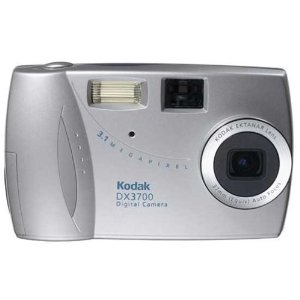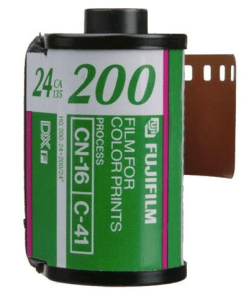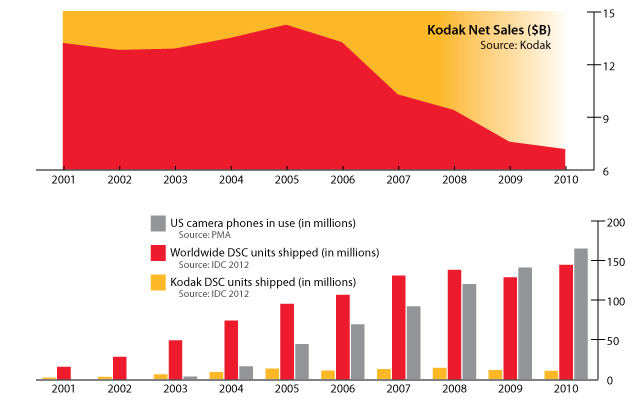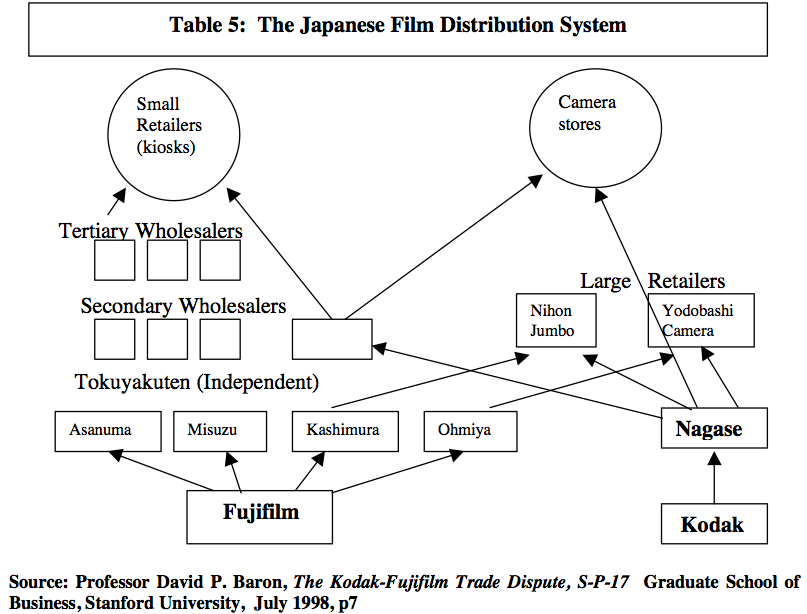Click.
We all had them: times you reached for a camera to stop life for a second, to grab a memory. For decades, Kodak was the rock solid standard in photography and as the 131-year old company files for Chapter 11 bankruptcy, “Kodak moments” may be all that’s left of what was once one of the most powerful companies in the world. Kodak can’t compete let alone survive in this new world. The only thing keeping them alive is a trove of 11,000 patents, and even those don’t seem to be piquing anyone’s interest.
Click.
From household name to also-ran in a few years. This isn’t a story of a stubborn buggy-whip manufacturer going out of business for refusing to change. This is a carriage maker making a seemingly successful transition to the automobile and then, just as quickly, failing catastrophically.
So what happened?
Click.
A Digital Decline
Digital photography took off and Kodak wasn’t ready for it. From the late 90s until about 2008 (which is also when camera phones became mainstream), the digital still camera market in the U.S. grew from 4.5 million units shipped in 2000 to 28.3 million units in 2007, according to PMA.
What’s interesting is that Kodak actually invented the first digital camera in 1975, but it was Sony who first introduced a digital camera to the people in the form of the Sony Mavica in 1981. Kodak, on the other hand, focused its digital technology on high-end, niche markets. They came to bat with a hybrid approach of sorts — offering sensors to other companies rather than building their own consumer products (Leica used their sensors for years and don’t even ask how that turned out) — because many of them couldn’t imagine a world in which selling one digital camera to a few power users would be more profitable than selling one-time-use film cameras to the masses… over and over again. A classic case of a disruptive technology coming in right under the incumbent’s nose.
Under CEO George Fisher, Kodak had been planning its digital strategy for most of the 90s. The problem was that the estimates for growth in the digital imaging sector were rather low anywhere outside of Japan during the late 90s. According to a study out of the University of Michigan business school, “the total volume of digital cameras sold outside Japan in 1997 was estimated to be only 400,000 units,” and many of them were believed to be for power users, not the general public.
Plus, Kodak’s presence in Japan was weak, at best, with Fuji absolutely dominating the Japanese film and camera market during the 90s.
That left Kodak leadership with a big decision. Should Kodak make a huge push into digital and risk cannibalizing its still-strong core business? That was the question, and the answers varied.
Here are two quotes from Kodak corporate literature from the UM study:
The keys to Eastman’s success in making photography a popular leisure-time activity for the masses were his development of roll film and the inexpensive box camera. Although film and cameras are far more sophisticated and versatile today, the fundamental principles behind his inventions have not changed.
Four years ago, when we talked about the possibilities of digital photography, people laughed. Today, the high-tech world is stampeding to get a piece of the action, calling digital imaging perhaps the greatest growth opportunity in the computer world. And, it may be.
Obviously, there was not a consensus and why would there be? Fuji dominated in Japan, and right at the moment that Kodak should have been pushing hard into the digital realm, estimates for anywhere outside of Japan remained low.
Clearly those estimates were wrong and Kodak was inevitably late to the game. Their first digital imaging offering was not a camera, but what they were calling the “Photo CD” in 1991. In 1996, Kodak made another small push with its pocket-sized DC20. At the time, digital was in its infancy and Kodak failed to see the possibilities, instead focusing on other digital products like scanners. In fact, Reuters reports that Kodak spent $5 billion on digital imaging research in 1993, only to delegate it to 23 separate scanner projects.
 Five years after the DC20, however, Kodak made its biggest push into digital cameras with its EasyShare line. Dan Carp had taken control of the company and knew to a degree that if they didn’t at least try in digital, it would be a mistake. But by 2001, the market was crowded. Canon and Sony had already made huge leaps in the sector, and Kodak had some major ground to cover.
Five years after the DC20, however, Kodak made its biggest push into digital cameras with its EasyShare line. Dan Carp had taken control of the company and knew to a degree that if they didn’t at least try in digital, it would be a mistake. But by 2001, the market was crowded. Canon and Sony had already made huge leaps in the sector, and Kodak had some major ground to cover.
Fear of change is understandable, to an extent, but it’s also the kind of backwards, old-fashioned thinking we’re seeing today out of the RIM playbook (pun intended).
A big part of the issue there was talent. The same employees that may be geniuses in film and film cameras aren’t necessarily as advanced in electronics. This, of course, did nothing for company solidarity as Kodak’s digital and film branches were at odds. Kodak had plenty of great people and great photographers, but they couldn’t keep them on the payroll as other major players dropped into the digital game after 2000.
The company spread itself too thin in the mid-90s and on into the next millennium, spending millions on research only to release incrementally updated products in a number of different fields. Already behind, this only made matters worse.
Then in 2007, the company made a huge mistake in selling off its health imaging business for $2.35 billion, which was meant to go toward its consumer camera business. Unfortunately, health imaging had been good to Kodak and the firm sold off the business just in time to miss out on baby boomer retirement. Reuters recounts that Kodak didn’t want to spend the money required to migrate the health industry from analog to digital.
By 2008, the digital camera market was already starting its decline. A new technology had emerged: 120 million camera phones were in use in 2008, just in the U.S. alone, according to PMA. Also in the U.S., 2008 brought about the first drop in digital still camera sales, down from 28.3 million in 2007 to 27.7 million. The sector would experience a slow but steady decline from then on.
But what slowed Kodak down so much between the 90’s and now?
Already Broken
To start, the retail landscape here in the U.S. changed dramatically over the 80s and 90s. Walmart, for one, saw a huge growth spurt in the 80s and opened its first superstore in 1988. And while Kodak was happy to be sold in big box chains, others were just as pleased to put their products in stores like Walmart.
You see, in the 70s and 80s, every little town had a tiny film store. Kodak owned the market wholesale, with between 80 and 90 percent share. Then Walmart, along with Sears, Costco, and other big box retailers, swallowed these little mom and pop stores up. Retailers learned that diversity, scrambled marketing, and one-stop shopping were important to consumers, and the only way to keep costs low was to squeeze the manufacturers into providing high-quality products at lower prices.
That’s where Fuji comes into play, and it seemed as though Kodak never saw it coming.
Kodak held between 7 and 10 percent of the Japanese market in the mid-90s, while Fuji had a dominant position. In fact, each of the companies held a rather dominant market share on their home turf, with Fuji representing 17 percent of the U.S. market. But distribution channels in the two countries were very different. While Kodak and Fuji were selling their products directly to retailers here in the States, distributors played middle-man over in Japan. Fuji, not surprisingly, had strong ties with the four major distributors in Japan, and Kodak… well, they didn’t like it.
In 1995, Kodak filed with the United States Trade Representative (USTR) for an investigation under Section 301 over whether or not the Japanese government had allowed anti-competitive practices. After two and a half years of litigation, the World Trade Organization in Geneva issued a “sweeping rejection of Kodak’s complaints” regarding Japan’s film market.
By dominating their own market and steadily making inroads in the U.S., Fuji had quite a bit of cash lying around to buy itself into new markets. And that’s exactly what it did. According to a case study [PDF] out of Pace University, “while the U.S. based Eastman Kodak Company was sleeping, the Japanese firm Fuji Photo Film opened its first film-production plant in the U.S., cut prices, marketed aggressively and stole valuable market share.”
This was between 1996 and 1997, when Kodak still held approximately 80 percent of the U.S. market and was focused primarily on roll film and film cameras. But Fuji was now prepared to duke it out in price wars, and though both companies denied actively engaging in such a thing, Kodak fired back hard each time Fuji cut prices. But it was too little, too late. In the years leading up to this, Kodak refused to cut prices for fear of profit erosion.
 In 1996, however, Kodak signed an exclusive agreement with Costco that left Fuji with 2.5 million rolls of excess film. To avoid expiration, the company offered a 10 to 15 percent price cut. Kodak resisted engaging, and rightfully so (perhaps), as Salomon Smith Barney analyst Jonathan Rosenzweig figured that “for every 1 percent cut in Kodak film prices, a 1 percent drop in earnings per share results.”
In 1996, however, Kodak signed an exclusive agreement with Costco that left Fuji with 2.5 million rolls of excess film. To avoid expiration, the company offered a 10 to 15 percent price cut. Kodak resisted engaging, and rightfully so (perhaps), as Salomon Smith Barney analyst Jonathan Rosenzweig figured that “for every 1 percent cut in Kodak film prices, a 1 percent drop in earnings per share results.”
Meanwhile, the American consumer was changing. While people still felt pride when they were “buying American,” imports became more and more attractive. A few years later, in January of 1999, the United States would record its single largest trade deficit month to date at $17 billion. To put it bluntly imports outweighed exports, and Fuji with its low-priced film fit into the U.S. market swimmingly.
By 1998, however, the competition between Fuji and Kodak seemed to slow down. Most of the price wars happened in the form of promotional deals rather than every day prices, but something even more fatal than Fuji was creeping up on Kodak: the digital revolution.
The Only Hope
Kodak’s market share had already been eroded by Fuji, but the company, over a century old, had too much pride to change. When all is said and done, pride and nostalgia brought Kodak to its knees. But today there is (or was, rather) one saving grace.
Kodak holds 11,000 patents which analysts value around $1 billion. Since Kodak invented the first digital camera, and research was one of the four pillars of Kodak’s business strategy, it only makes sense that where digital imaging is concerned they own the technology.
But it’s too late to act like the technology in those patents is groundbreaking. It’s everywhere, and thus Kodak is suing everyone: RIM, Apple, HTC, Fujifilm, and Samsung. The company knows that its patents are its only solid source of revenue, whether it’s by selling them or licensing them.
Unfortunately, litigation takes years, and no one seems all that interested in buying Kodak’s patents. Which brings us to today.
After filing for Chapter 11 bankruptcy on January 19, 2012, Bloomberg is reporting that the company intends to shift its business toward printers and its ink. Selling off its camera unit and perhaps its patents should allow for more cash which can be invested in further patent litigation and licensing.
But this is a far cry from the Kodak of yesteryear. Once dominant, the 131-year old company is now fighting for survival and without a massive leap forward in terms of innovation, this may be the end.
There will still be kodak moments, but there may no longer be a Kodak.

































Comment